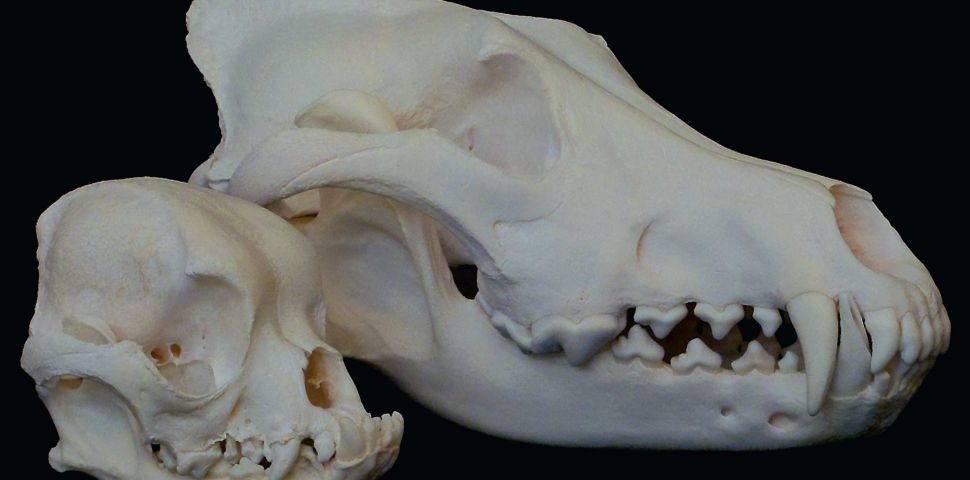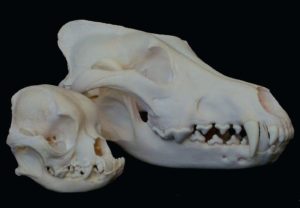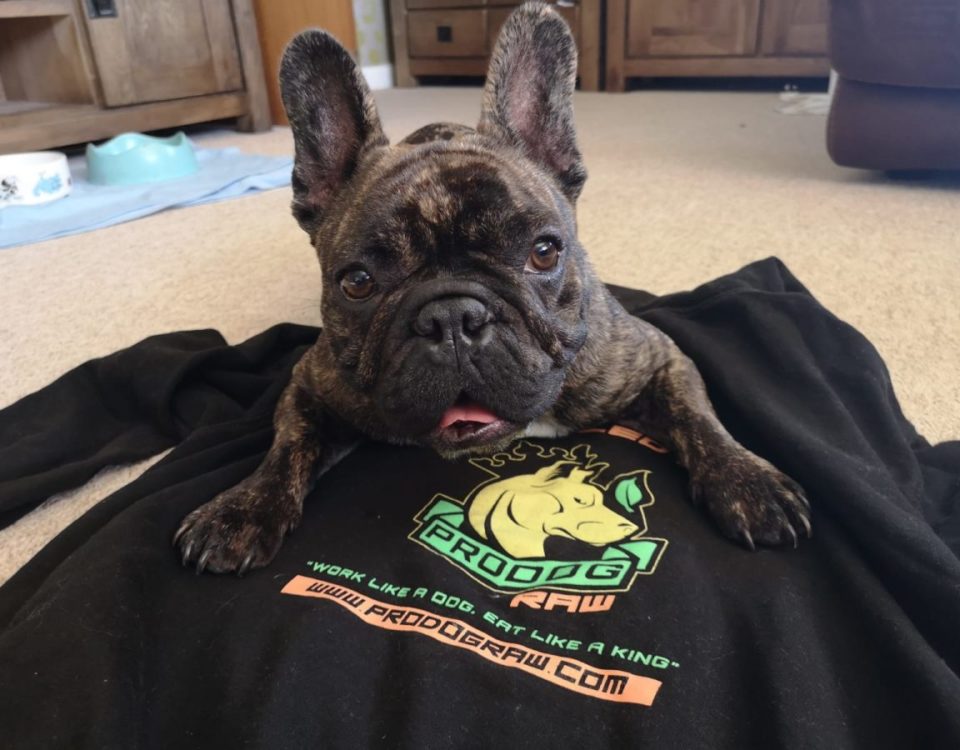
Dog walking
February 20, 2020
Dog Ear Infections
February 20, 2020Why Dogs Need Meat

 For those yet to be convinced that dogs are omnivores and need meat in their diet, we urge you to take a look at the anatomy and structure of a dogs jaw as a starting point. You only have to look at the picture above to see just how many sharp and pointed teeth they have and one look inside your own dogs mouth will prove this point. These tools are developed by nature for a specific purpose. Dogs are designed to be meat eaters, to hunt their prey and use their strong jaws to crush, slice and chew the meat and bones.
For those yet to be convinced that dogs are omnivores and need meat in their diet, we urge you to take a look at the anatomy and structure of a dogs jaw as a starting point. You only have to look at the picture above to see just how many sharp and pointed teeth they have and one look inside your own dogs mouth will prove this point. These tools are developed by nature for a specific purpose. Dogs are designed to be meat eaters, to hunt their prey and use their strong jaws to crush, slice and chew the meat and bones.
It is not just a dogs teeth that are a significant indicator that they are intended by nature to be carnivores. In addition to their teeth and jaws, there are many other reasons that dogs need meat. They are anatomically geared up to process and digest meat – everything from the muscle and sinew to the offal and bone of prey whether it’s birds and rabbits or lamb and beef. Of course, we can’t send our dogs out hunting so we need to find a way to get everything they need into their diet. As owners, we are responsible for their health and what we put into their system. That’s where we can help.
Amino acids in protein are the building blocks of growth
Dogs need the right food in order to develop strong and healthy bodies and an immune system that can combat potential illness, allergies, sensitivities and more. Amino acids, which are the foundation of healthy growth and development are found in meat proteins. Taurine is an amino acid which is crucial to cardiac function, eye health, the immune system and in many other canine systems all contributing to the growth and health of a dog. Taurine assists the heart in pumping and circulating the blood round the system – low levels of it can be dangerous and lead to Dilated. To get the correct amount of this critical amino acid, meat and offal (especially the heart), must be included in their diet.
Kibble doesn’t contain enough taurine
Due to the nature of the ingredients used in processed dog foods such as kibble, and the low meat, high grain content, there is not enough taurine in kibble as required by a dog. Because it has been assumed by many that dogs can produce enough taurine themselves to put them out of danger of developing taurine deficient illnesses such as DCM, there has never been a regulatory requirement to add it to kibble (unlike cat food). Unfortunately, the larger the dog, the bigger the problem. While smaller dogs are more able to produce taurine themselves, larger dogs just don’t have the capacity to produce the required amounts which is why they need a well-balanced and nutritious raw, meat-based diet.
Which Meats are Best for Dogs?
There are several meats that dogs can enjoy and benefit nutritionally from which have sufficient levels of taurine and the other required amino acids. These include turkey, chicken, beef, lamb, duck and rabbit. A varied diet is important as each protein offers different benefits. Some are higher in calories and fats than others and they have a different vitamin and mineral profile so always feed as much of a range as possible.
Dogs need to eat the full spectrum
As well as requiring diversity when it comes to the source of meat a dog should eat, you should also consider the inclusion of different cuts and organs. Muscle, sinew, bone and offal are all parts of an animal that should be included in a raw diet for dogs. There are many benefits to a varied diet that replicates one a dog would eat in the wild. For example, bone is not only a great source of nutrition and useful to the digestive system, it also helps to keep the teeth clean and the breath smelling fresh. Bones are also a great way to exercise the jaw and upper body as well as stimulating the dog to avoid boredom. They are also rich in the essential mineral, calcium which supports teeth and bone development and help the blood to clot properly. Healthy levels of calcium can also help a dogs muscles to lengthen and contract as well as supporting essentially cell processes.
A dogs teeth are designed to eat meat
In total, a dog has 42 adult teeth. Each tooth has a contributing factor in helping a dog to hunt and defend themselves and to rip apart and break down their food. Like their own set of cutlery or a very hand Swiss army knife, each tooth has an important role to play.
- Incisors are the smaller teeth at the front of the mouth that are used for scraping.
- Canines which are used to tear meat apart (also, is it a coincidence that dogs are classified as canines?)
- Premolars are used to shred food. The 4 premolars are known as the carnassial teeth and they are used in a slicing action as they work back and forth against each other, a bit like carrying their very own pocket knife.
- Molars are used to break down hard foods – wolves use them to crush large prey bones.
Dogs don’t have teeth that grind from side to side – this is the action required for plant eaters. They also don’t have amylase in their saliva which is used to break down the carbohydrates found in plants. This is largely why dogs tend to gulp everything down – all of the digestion takes place in the stomach.
The anatomy of a true carnivore
In addition to strong teeth and jaws which are the tools they need to deal with a raw, meat based diet, they also have other anatomical traits that indicate why they are meat eaters and not herbivores. They have a short, very quick digestive system with stomach acid so strong it would literally burn the flesh off your fingers. This acid is produced to rapidly break down meat and bones.
The gut flora (good bacteria) that is produced in a dogs digestive system and is critical for a healthy immune system, is designed to process meat as the main staple of a dogs diet. It should be noted however that while they do not need a large quantity of plant based additions, there are many benefits to also including some green matter such as vegetables and fruits to ensure that your dog receives all the required micronutrients of a balanced diet. This is demonstrated in nature by wild dogs and wolves who also eat the stomach contents of their herbivore prey.
Raw meat is the best diet for dogs
There is much evidence that proves that a natural raw diet is the one that nature intended for our dogs but we need to look to their wild ancestors to see just how valid this is. Processed foods such as kibble have only been around since meat shortages in the second world war when a cheaper alternative was required. So that’s around 80 years – not the 4 million years that dogs and wolves have been roaming the planet. Now, we are readily misinformed that these heavily processed and mass manufactured low grade foods are what our dogs should be eating despite the amount of health concerns they can cause to a canine. A dog is simply not built to cope with a man made, carbohydrate laden, intensively produced synthetic diet full of all manner of nasties.
Introducing your dog to a raw diet is the best protection that you can give them. Not only does it give them everything they need to build a strong and healthy immune system, you will also notice a wealth of other benefits such as cleaner teeth with much nicer breath, a shinier coat and great skin condition and less negative behaviours. It is also much easier to control their weight as they use up all of the nutrients with less waste. To discuss making the switch, get in touch with the team who will be delighted to help and advise you.


